
A 5 am start out of Gran Canaria meant pulling up anchor in the dark and motoring out to light winds as the sun rose over the Islands. We were headed about 53 miles to Tenerife, our last stop in the Canary Islands chain, to finalize provisioning and wait for the best weather window to start the long journey across the Atlantic. It didn’t take long for the winds to pick up to13-15 kts on the beam so the sails came out and we started moving along at about 7-8 kts. Unfortunately, we also had 1-2m short interval swells on the beam, making it for a bit of jerky ride. Soon Tenerife, the largest of Spain’s Canary Islands came into view. A view dominated by Mt. Teide, a dormant volcano that is Spain’s tallest peak. We also had a ton of dolphins come visit and play off our bow. That never gets old. After 10 hours, we put the sails down in a very choppy bay with 20-25 kts winds. With a wing sail that won’t come down unless it is completely slack dead into the wind and no wind hold capability (our rotating mast makes this difficult), it is always very arduous.Slowly and very carefully, we made our way through the narrow winding entry of Amarilla Marina in San Miguel de Abona. Seriously, the wind was NOT helping.
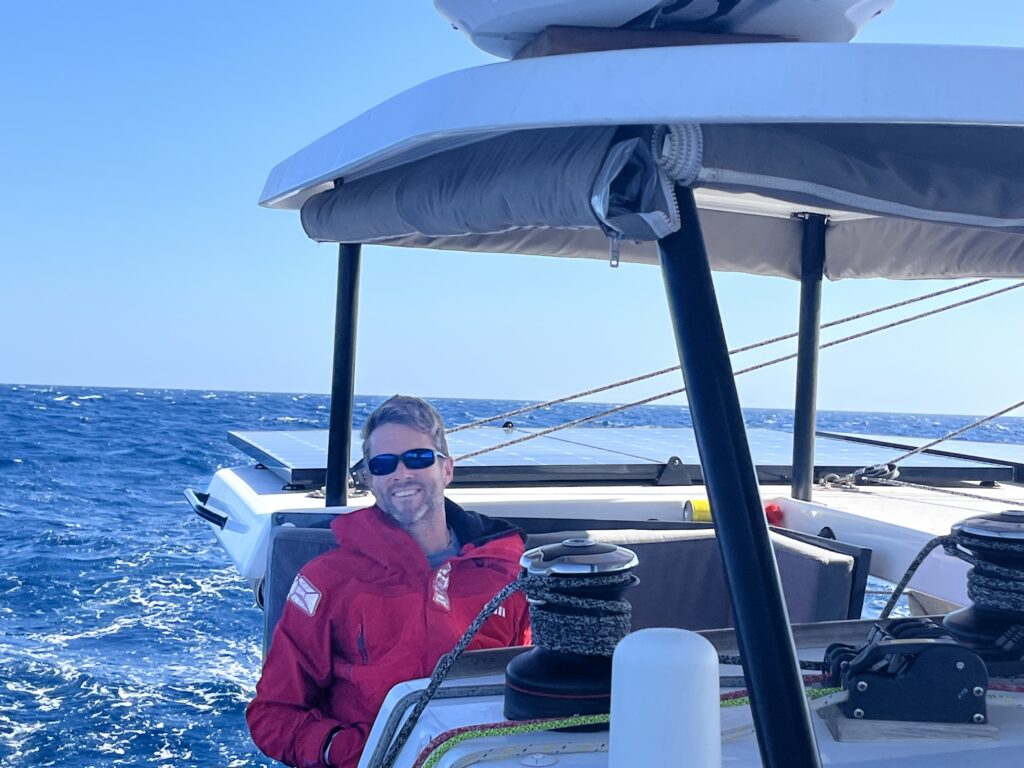
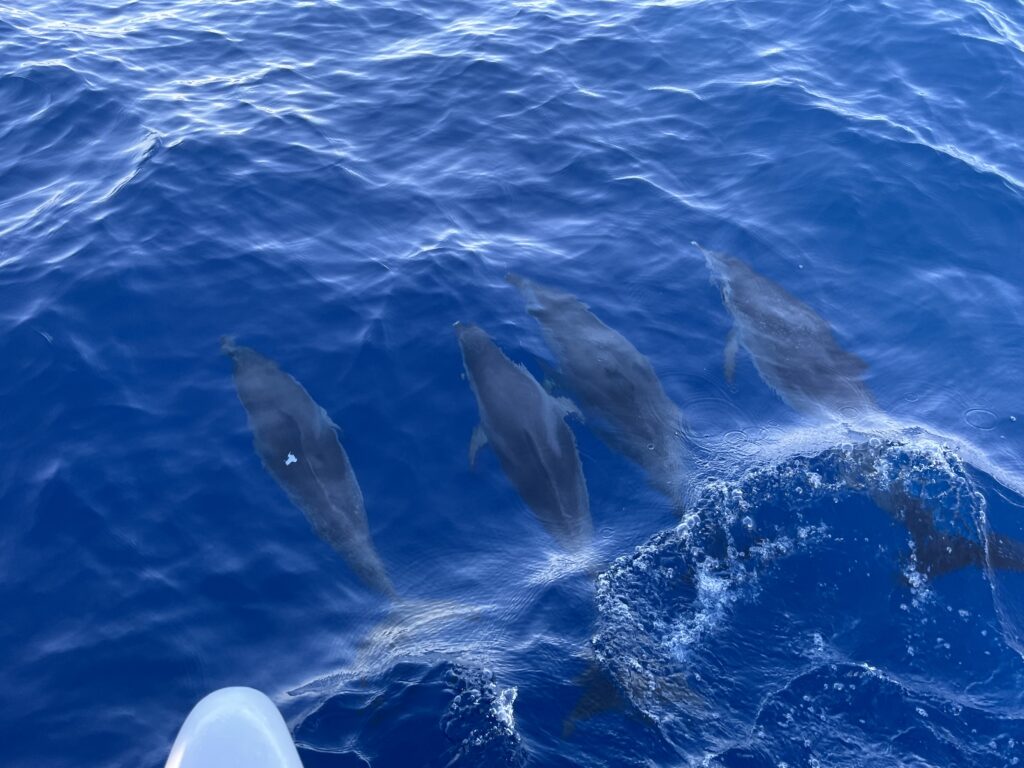
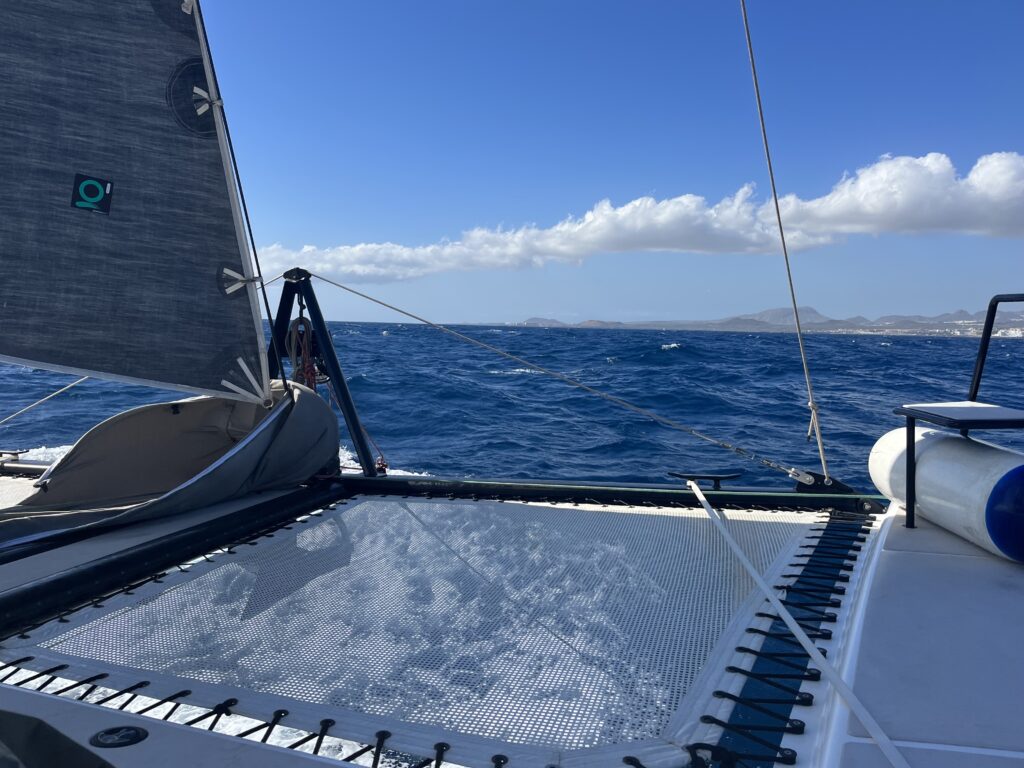
That boat looks familiar!
As we roll around the last turn heading to our space along the sea wall, we see a boat that looks VERY familiar. It looks just like ours! As we are Vision’s Hull #4 and there were only a hand full of boats sailing outside of South Africa, we couldn’t believe our eyes. We rolled up and parked just down the way from Hull #1, Nomadic Rose! As we yelled like crazy to try to get the owner attention as we drifted by, the hired Captain met us instead…with a very confused look on his face. Once docked, we walked down and chatted a bit. We’d meet Axel, the owner later that afternoon. A wheelchair bound…yep you read that right…force of nature! This is a man that certainly does not let any physical disability in life get in his way of chasing his dreams. Quite the inspiration.
We cleaned up the boat and made sure everything was secure, then made a fairly lengthy call to cover last minute logistics with our inbound crew who’d be arriving in few days. Geoff would be rejoining us after his European walk-about and Henry, another very seasoned captain, and bonus, a trained EMT (It’s nice knowing that someone on board would known what to do in a medical emergency so far off shore!). We discussed travel, weather forecasts, sail plans, left over maintenance tasks, and provisions. All of which we would spend the bulk of our time here completing prior to their arrival.
Women’s World Cup Fun
Once all that was settled, it was time to go for a walk and check out the local area. There was another US World Cup match on after all. We found great seats at the Wild Geese Irish Bar just up the road from the Marina. Perfect. We were very proud of ourselves for being able to convince the single British pub in the remote island town to change a single TV to the USA vs Iran soccer game (pronounced “futbol match”). The US won 1-0. Days later, we would again come here for futbol when the US was playing England. As that game started, we figured we might be in a bit of a spot as the entire bar erupted in the English National Anthem as it played at the start of the game…definitely the minority! The US lost that matchup by a goal. Sad.

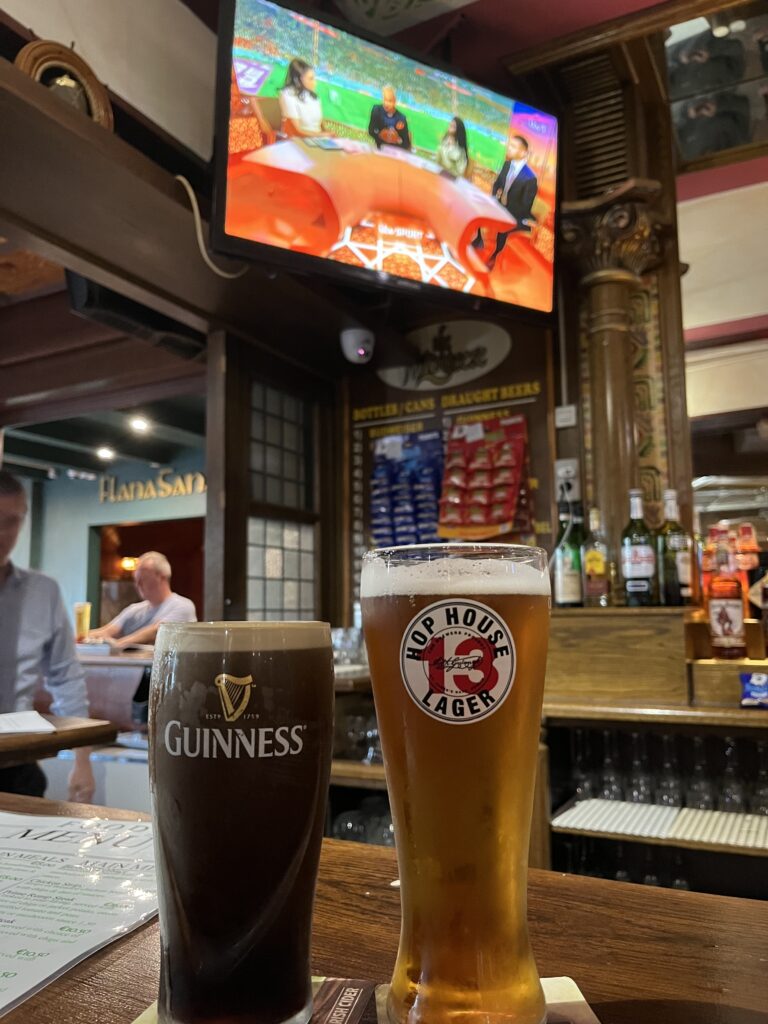
Side Note: In all of our world travels, we can confirm that almost every decently sized city will have an Irish Bar. We haven’t been proven wrong yet. 🙂
One Last (Very Cold) Volcano Hike
First order of business is to bus to the airport and pick up a Cigar Tenerife Sur rental car. We are going to be here a few days and have a lot to do and things to buy! Tenerife does have a fairly good bus system with lots of stops around the town. On our way back, we swung by the HiperDino to pick up the first round of what remained on our grocery provisioning list, mostly the non-perishables.
Since we had the car and some time to kill before our crew showed up, we decided to visit the highest peak in Spain, Mount Teide (3718m / 12,198’). We drove through the countryside, up into the the very winding, narrow and motion sickness inducing treelined roads before we finally broke out into the otherworldly views of dried lava fields. We seriously hit every type of environment on the drive to the park’s Visitors Center, Centro de Visitantes de Canada Blanca.

There are two ways to ascend the mountain. The first is to hike 5-6 miles to the top. The other is by cable car which travels from the base station at the Visitor’s Center, at an altitude of 2,358 m to the top station, La Rambleta, at 3,555m. We had time, but not that much time, so we opted for the latter to shorten a potential 6 hour trip to 8 minutes flat.
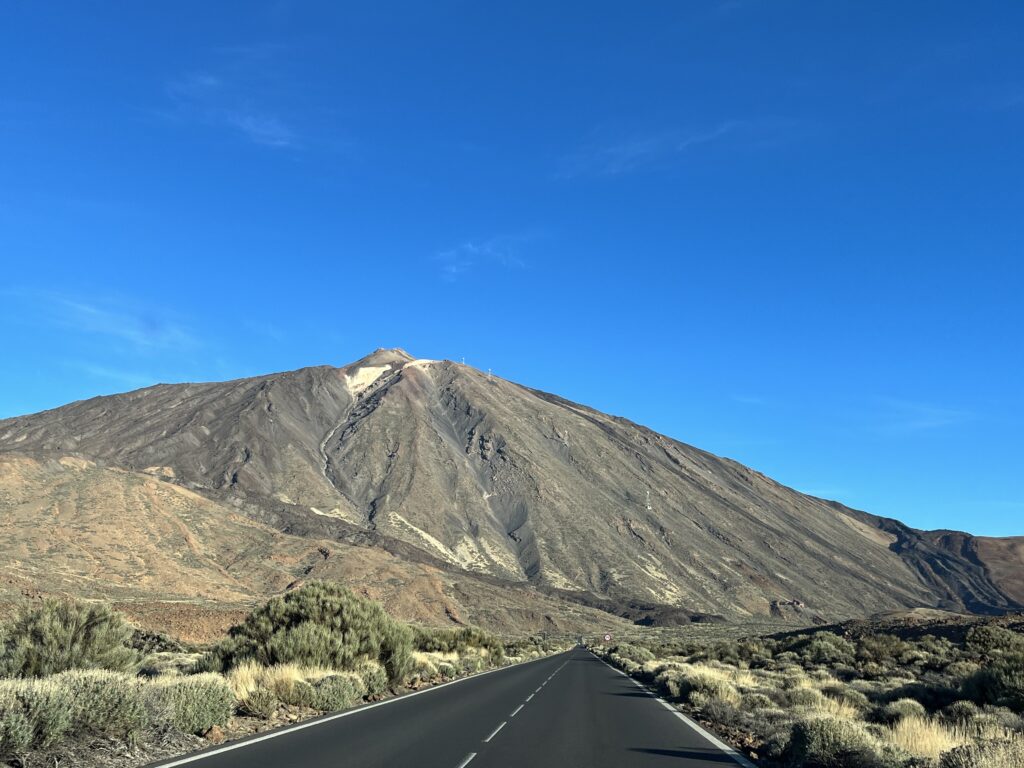
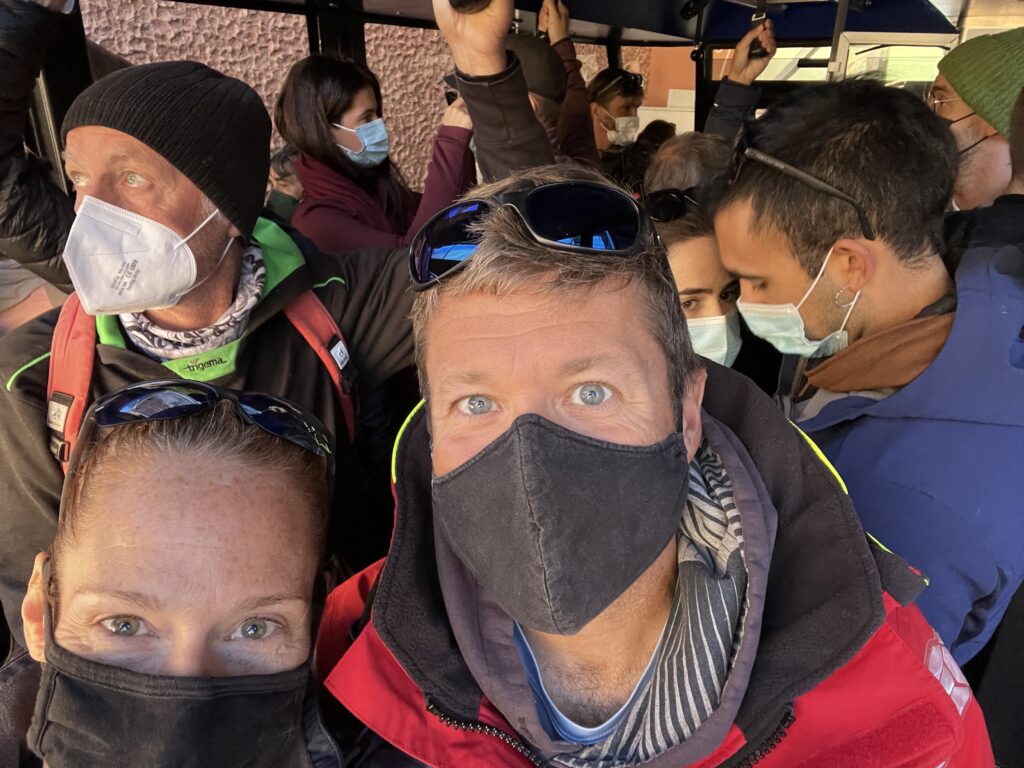
The trip up wowed us with breathtaking views of the mountains and coast lines! It was worth it. From the top station, there are 3 trails to choose from. The one to the very summit and around the crater requires a permit, which we did not have, so we spent an hour (the time limit to spend up there if using the cable car) on the two other trails. La Foraleza took us to stunning views of the north side of the island where steam was actually coming out of the rocks and a fabulous sea of clouds over the ocean. Pico Viejo brought us to a viewpoint of island’s southern slopes and smaller craters. From both we could see the distant neighboring islands, some we had already visited! It was wild to look back on our journey thus far.

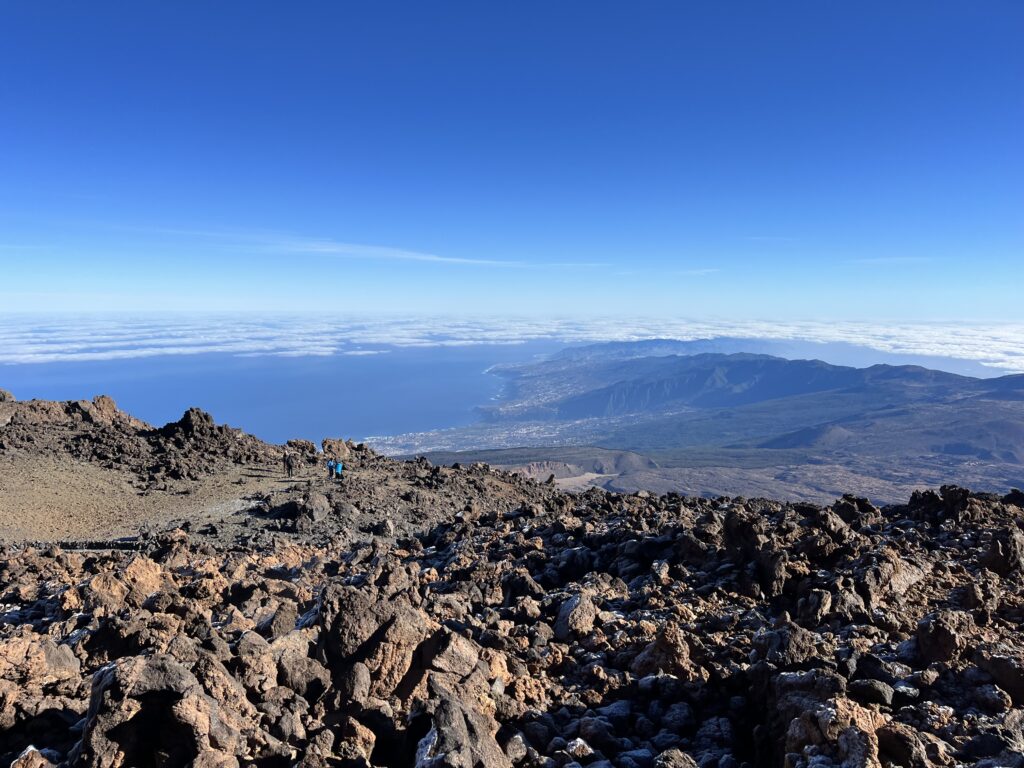
Overall we got to 3705m (12,155’) and did about 4 miles of hiking. To say it was cold and windy was an understatement. At the boat, we left a very comfortable 65 degrees F (28C). In 8 min we were transported up to 30 degrees (-1C). Brrrrrr. There was actually frost on the rocks as we hiked. Living on a boat through the summer, we didn’t have a ton of warm clothes so we layered with most of what we could scrounge together. It’s well worth the trip up for the incredible views.

Fun facts about Mt. Teide:
Mt. Teide is an active volcano (last eruption was in late 1909). Its summit (at 3,715 m / 12,188 ft) is the highest point in Spain and the highest point above sea level in the islands of the Atlantic Ocean. When measured from the ocean floor, its height of 7,500 m (24,600 ft) makes Teide the third-highest volcano in the world. It actually casts the world’s largest shadow projected on the sea. The shadow has a perfectly triangular shape, even though Teide’s silhouette does not.
While El Teide is the third largest volcanic structure on Earth, it is dwarfed by the largest volcano in the Solar System, Olympus Mons on Mars. Why? Here on Earth, the movement of the surface layers causes lava eruption points to move over time, giving rise, for example, to the formation of the Canary Islands. On Mars, however, the point of eruption remains in the same place for much longer thereby forming gigantic volcanos!
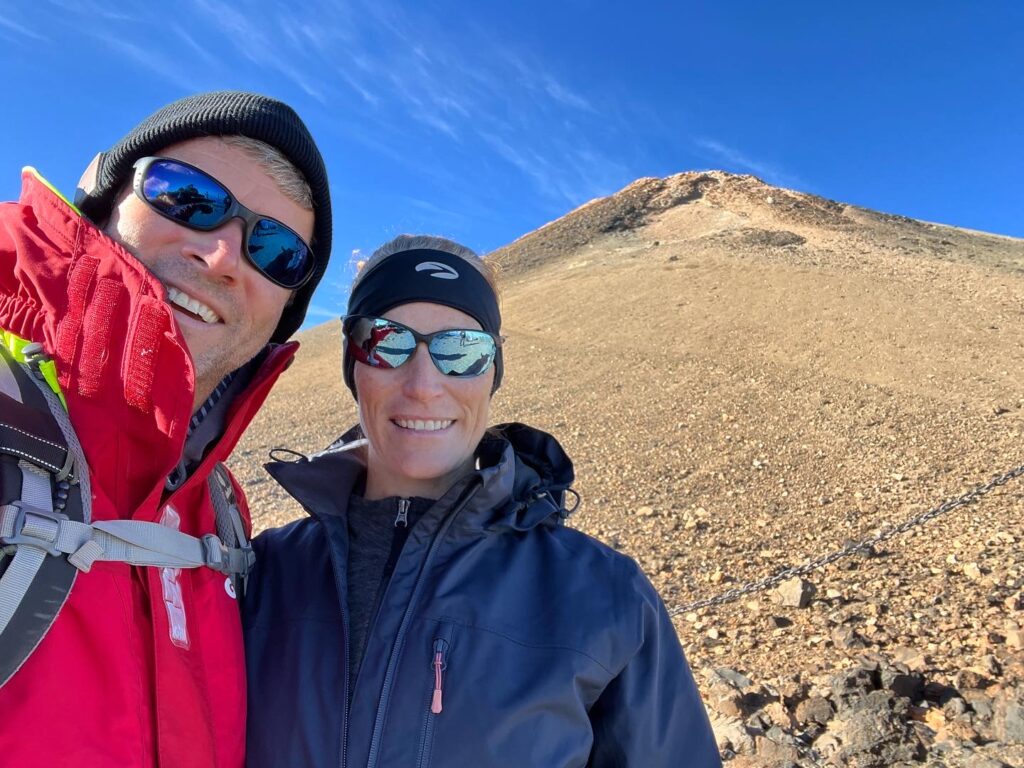
Getting Down to Business
On November 30th, it was really time to get down to business. Our crew was due to arrive later that afternoon. First up was finishing the provisioning. We went back into Las Charfiras, a shopping/business district just outside the Marina. First stop was Spain’s version of Walmart, appropriately named Chinatown, a huge everything store which we picked up some last minute supplies and Christmas fun. We may still be on board as the holiday rolls around. Hopefully, not, but you never know!
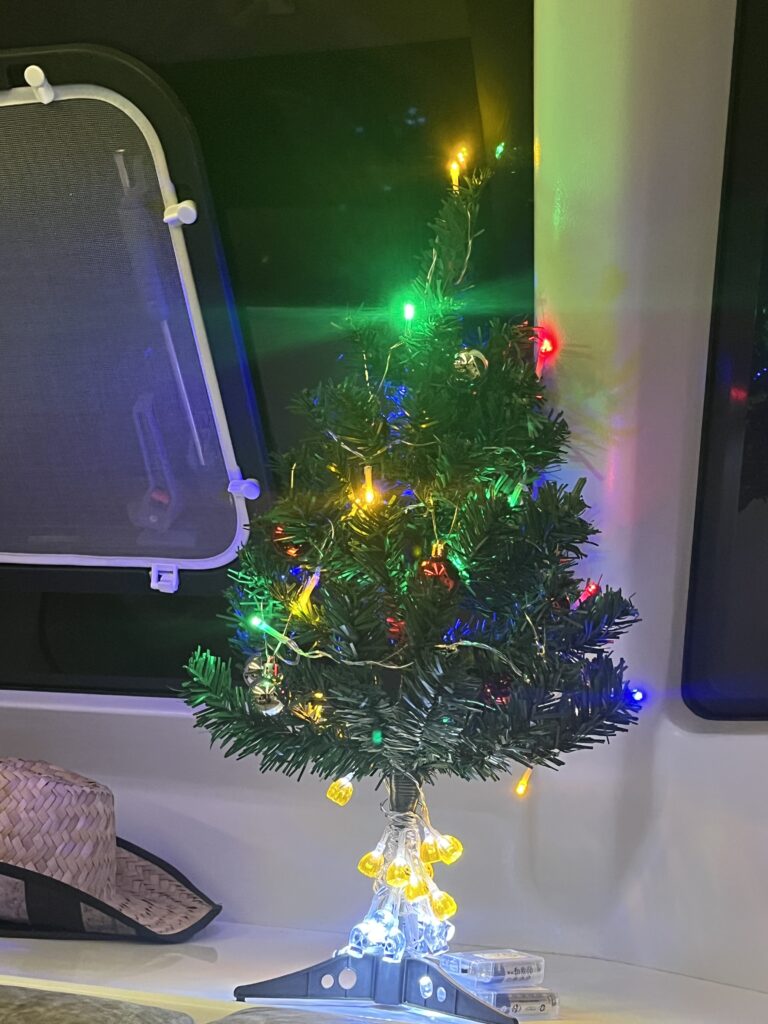
Upon parking, we ended up finding another goldmine! Overseas, a British grocery store. A great shop with quite a few things we’d been missing and some fun stuff for dinners like gravy and cranberry sauce. Glad we went there first before the big grocery run. We ate at the Chinatown Wok for lunch which had surprisingly good Chinese food!
Next up was the big grocery run. We saved this last trip to try and get all the meat, cold stuff like eggs and lunch meats and fresh fruits and veggies so they would last as long as possible. We ended up with two grocery carts full! We offloaded the fun back at the boat and went to pick up our crew at the airport. Things are starting to feel real. We are really doing this!
With the arrival of our crew also came our crossing shirts. CustomSailingShirts.com crushed it! We are going to look good on this crossing if nothing else!
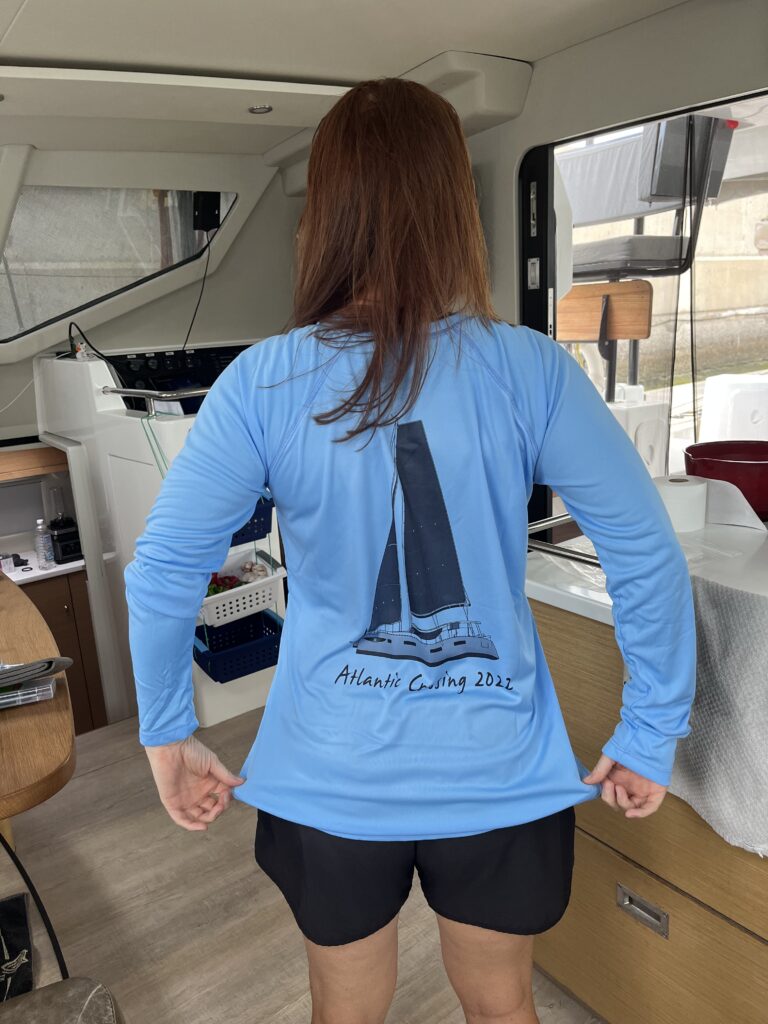
It’s GO time!
Our final day dockside was spent organizing and prepping. I squared away our provisions (like vacuum packing meat into meal sizes) & prepared a few more easy to make InstantPot freezer meals for the rougher days at sea. Also prepped all the fruits and veggies so they would last as long as possible. I actually did a lot of research on storage techniques like temperatures and what likes to hang out with what in order to keep everything good as long as possible To see just how much food we had on board, see the YouTube video at the end. Kevin, meanwhile, gave the crew the grand tour and worked out our sailing plans. Last step, we headed over to the fuel dock to top off our tanks and 16 spare 25 liter jugs.
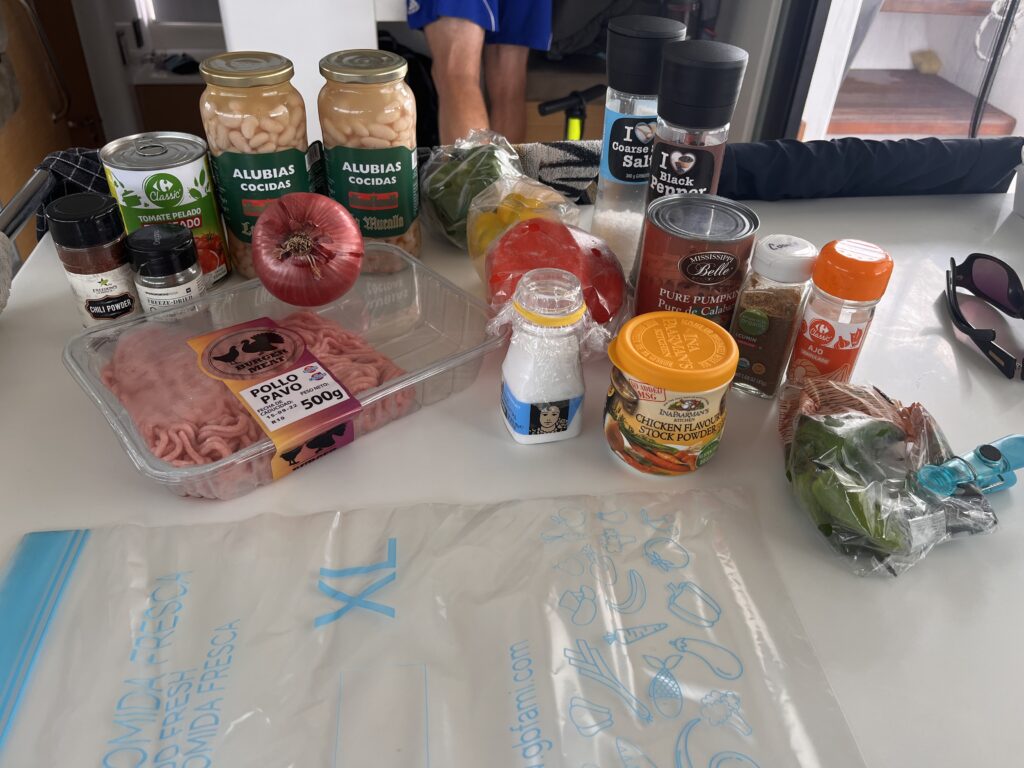
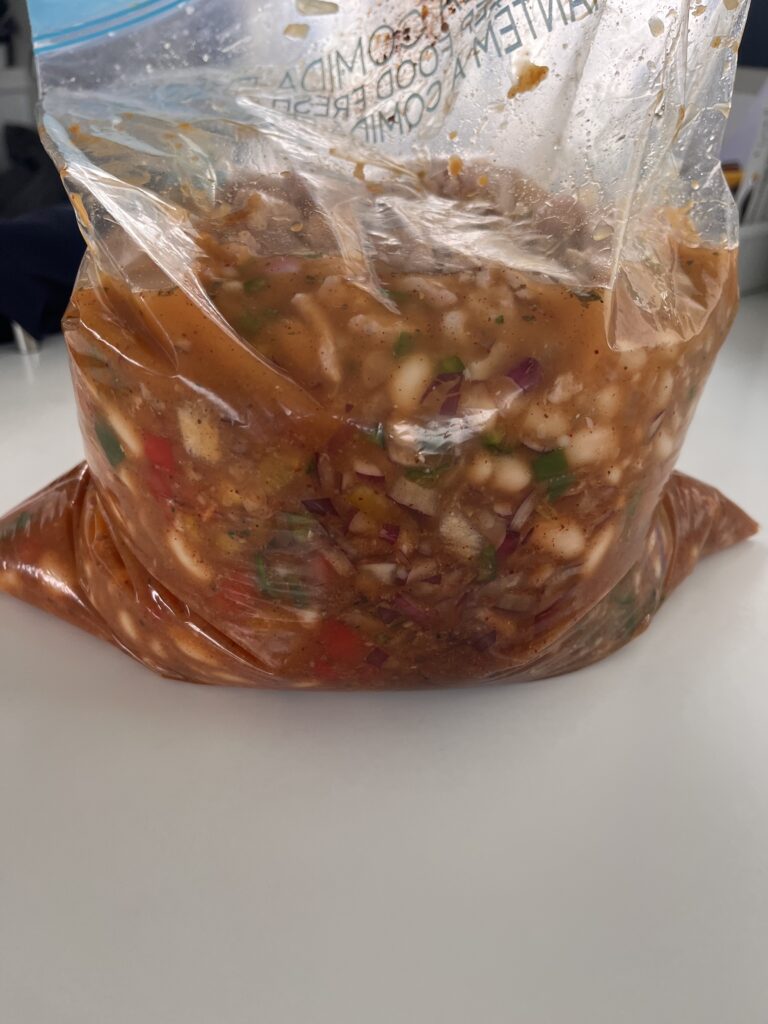
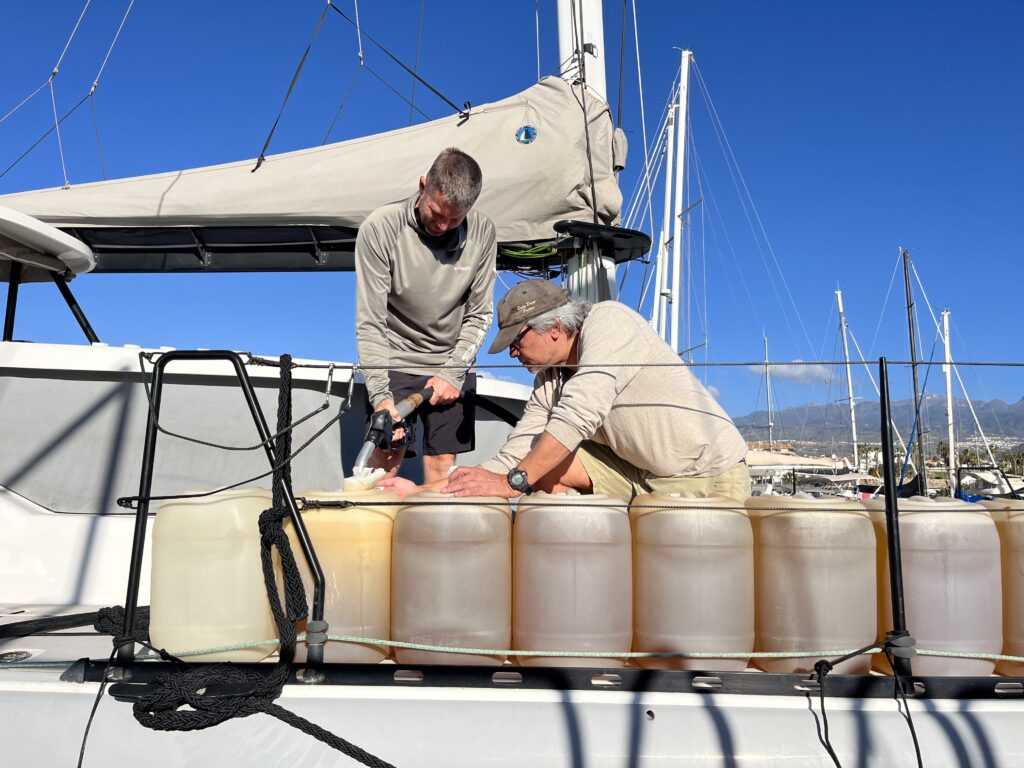
Once we felt like we had everything read to go, we drove to the airport to check out of the country only to find out we had to drive an hour up north to the ferry terminal area in Santa Cruz to check out. Once there, we walked in circles all over the ferry dock and terminal area until a kind gentleman pointed a blue line on the sidewalk and said “follow” that. Huh. We ended up at the Comisaría Policía (police station) where they took our info and passports and, thankfully allowed us to leave their beautiful country without any hassle! The length. of our Visas may or may not have been a confused matter.
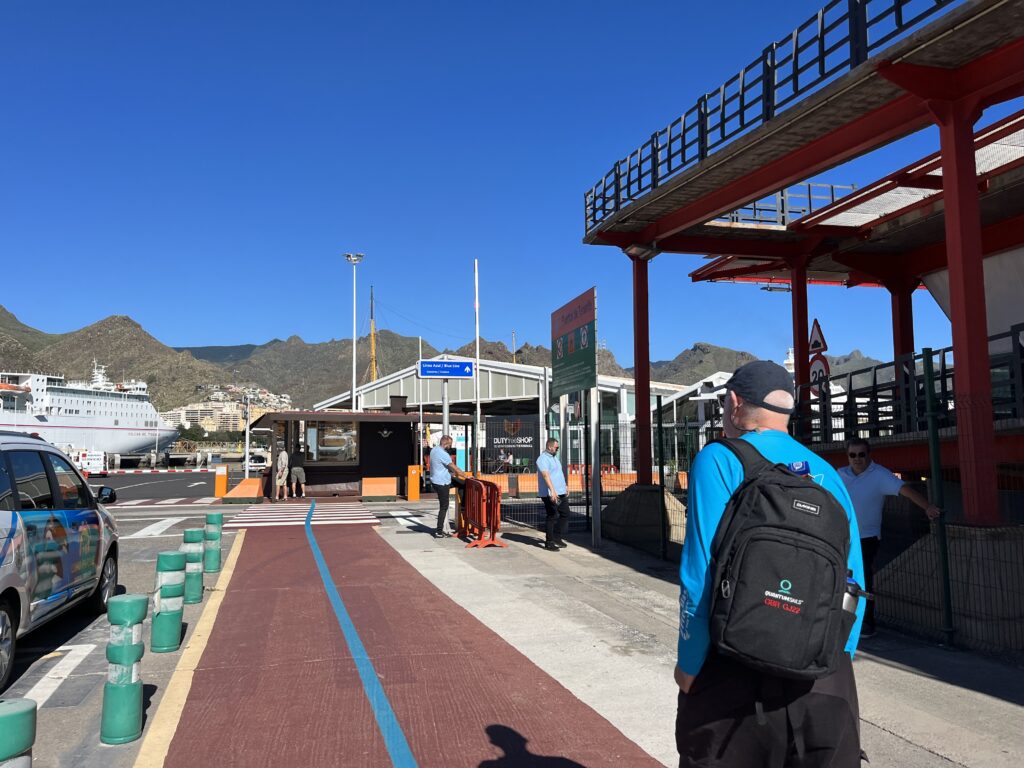
Once back, I dropped the boys off to finish everything up at the boat while I headed back to the airport to return the car. From there, I took the bus back to meet the group at a fantastic Indian Restaurant, The Mill, for one last delicious “land” meal.
And with that, our crazy Spain sailing adventure was coming to a close! It’s finally GO time! Fueled up, fooded up. We plan to leave late tomorrow morning and hope we can get ahead of some squirrelly weather patterns as we head west. Our destination still undecided other than we will be landing in the Northern Caribbean after 3 weeks at sea.